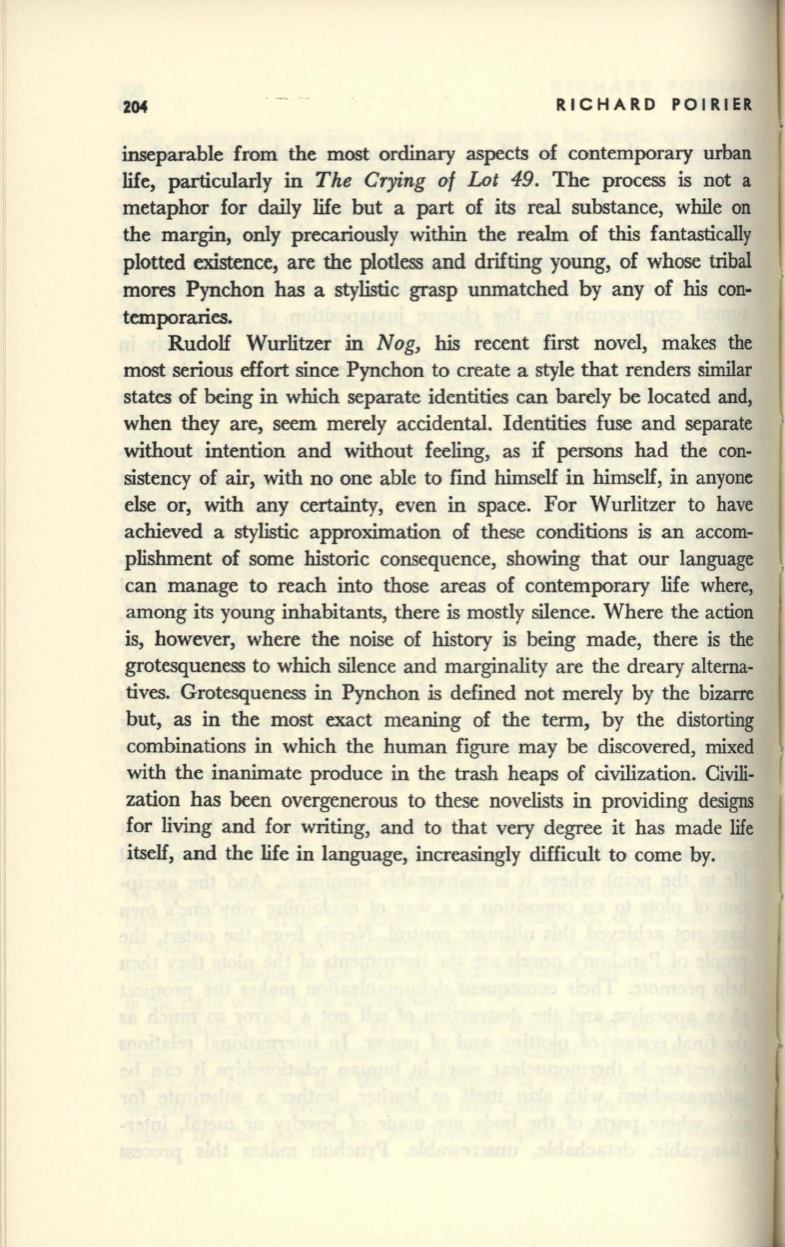
204
RICHARD POIRIER
inseparable from the most ordinary aspects of contemporary urban
life, particularly in
The Crying of
Lot
49. The process is not a
metaphor for daily life but a part of its real substance, while on
the margin, only precariously within the realm of this fantastically
plotted existence, are the plotless and drifting young, of whose tribal
mores Pynchon has a stylistic grasp unmatched by any of
his
con·
temporaries.
Rudolf Wurlitzer in
Nog,
his
recent first novel, makes the
most serious effort since Pynchon to create a style that renders similar
states of being in which separate identities can barely
be
located and,
when they are, seem merely accidental. Identities fuse and separate
without intention and without feeling, as
if
persons had the con–
sistency of air, with no one able to find himself in himself, in anyone
else or, with any certainty, even in space. For Wurlitzer to have
achieved a stylistic approximation of these conditions is an accom–
plishment of some historic consequence, showing that our language
can manage to reach into those areas of contemporary life where,
among its young inhabitants, there is mostly silence. Where the action
is, however, where the noise of history is being made, there is the
grotesqueness to which silence and marginality are the dreary alterna–
tives. Grotesqueness in Pynchon is defined not merely by the bizarre
but, as in the most exact meaning of the term, by the distorting
combinations in which the human figure may be discovered, mixed
with the inanimate produce in the trash heaps of civilization. Civili–
zation has been overgenerous to these novelists in providing designs
for living and for writing, and to that very degree it has made life
itself, and the life in language, increasingly difficult to come by.


